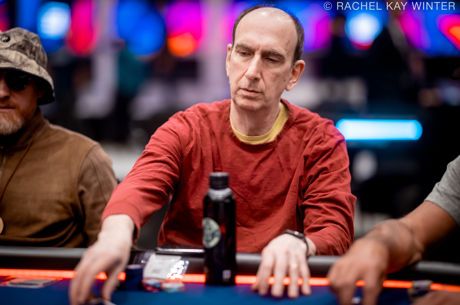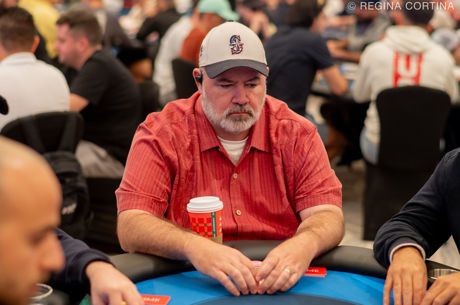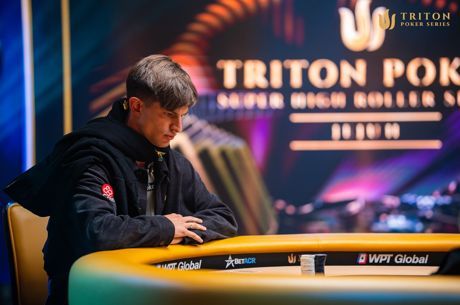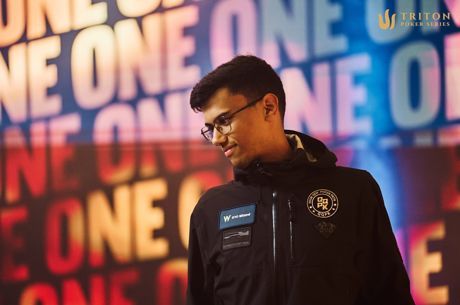Ask The Pros: Thoughts on the New WSOP Player of the Year Formula?
Thirteen years ago, Daniel Negreanu earned the first World Series of Poker Player of the Year award and instantly thrust the spotlight on a new accolade rewarding the most outstanding results during the series.
In the early years, each event was weighted equally. There were no multipliers for the amount of buy-in or the number of players.
It wasn't until 2011 that the formula was changed to give weight to field size and buy-in, plus it began including WSOP Europe in its calculations for POY. Since then, the WSOP has contracted with Bluff Magazine and most recently the Global Poker Index to calculate player of the year points. Then this year, in a surprise announcement, the WSOP went back in-house by creating a proprietary formula that appears to be based on ROI, which takes into account buy-in amount and the amount won.
With a new year and another new formula, you can bet there are players keeping an eye on things. Negreanu is one of them. He started the series off like he does every year, setting a goal of winning the Player of the Year.
Questions about the POY formula really started to pop up early this week after Negreanu tweeted, "I'm so confused by this year's WSOP POY point system. I'm 12th on the list while last year's system has me 2nd behind James Obst."
This started a Twitter conversation between a few players and some media members who were questioning the new formula and comparing this year's point system to previous years.
It makes sense that if Player of the Year is a personal goal, and last year's formula favored your results, that you would be a bit biased against this year's formula.
So we know how Negreanu feels (watch the video above if you haven't already), but what are other players thinking and saying? To find out, we decided to ask a variety of professionals, some who play in the larger buy-in championship events and others who mostly dabble in the big field no-limit hold'em events.
Skill vs. Luck Debate
Most players would agree that winning a tournament requires both skill and luck. Do the number of players, and the buy-in amount determine how much of each someone needs to win?
According to Mike Matusow, Negreanu "is 100 percent right when he says competition in 10Ks is so much superior to any small buy in tourney."
Natasha Mercier weighed in on the opposite side, saying, "I think it is way more fair for people who beat a huge field to get more points than the people who beat a 100-person field."
The reality is that tournament play is challenging regardless of field size. The larger fields that include more recreational players have challenges different than higher buy-in tournaments that typically attract professionals.
Balance
Most pros we talked to agree that the current formula seems to favor big fields and interestingly enough, the players that will benefit from these big fields think the formula is a little too favorable to them.
Matt Affleck, currently in 23rd on the POY leaderboard said, "The POY seems to heavily favored to large-field no-limit events. Now a no-limit player has a shot at POY which wasn't always the case because there weren't a lot of high buy-ins in no-limit. Honestly, the points awarded do seem a bit high. The thing is, if I run deep, I will probably play more events than I originally planned in order to make a run at it."
"I don't think it should favor the bigger buy-in mixed events. I do like to see the no-limit players have a chance to win it."
Ray Hensen, who sits 13th in the standings after making a final table on Wednesday, had this to say: "I like it and don't like it. I don't think it should favor the bigger buy-in mixed events. I do like to see the no-limit players have a chance to win it. In the past two years, there was no way a pure no-limit player would win. You had to play the mixed games. Nobody is every going to win four bracelets in 4,000 player fields. If it's going to go to somebody who gets eighth in the Colossus, 72nd in the Monster Stack and 130th in the Main Event then that's just way too much weight. And for someone to have the year that Negreanu's having already (four cashes and a second- and a third-place finish) and for him to not be at the top or near the top is a joke. They need to find a happy medium. I don't know what that is, but everybody should have a shot."
Consistency
The Player of the Year formula has changed a lot over the past few years, and it's probably fair to say that the best thing the WSOP can do is find a formula and stick to it - which is probably their intention with bringing it in-house.
Most players acknowledge that there isn't a formula out there that will make everyone happy, but pick one, test it, and then stick to it.
This sentiment is what we heard when we caught up with Allen Kessler.
"It seems to change every year," he told PokerNews. "They should use one set formula. The GPI formula they used before was flawed. So now people are looking at that and comparing their results and saying this one is flawed. It should be consistent from year to year, and they keep changing it."
Unaware
Surprisingly, many players we talked with simply don't keep track of the POY leaderboard at all.
Justin Bonomo, Jessica Dawley and Sam Cohen are just here to grind out the summer. They're not paying attention to the chatter or where they stand on the leaderboard. They are just here to play.
Unaware Until There's a Reason
And then you have a whole host of pros who are unaware of what's going on with the leaderboard right now. It's amazing how having a chance at achieving Player of the Year prompts you to start paying attention.
Brandon Shack-Harris hasn't paid attention to it at all, but grinned as he said, "I'll probably start to pay attention when I win something."
Mike Leah had this to say after bagging in two tournaments Tuesday night and playing in his fourth tournament of the day: "My number one goal going into every summer is to be Player of the Year. There are not many people that play more than me, so I feel like I have a realistic shot every year. I just want to give myself a chance. I've seen some of the chatter, but because I'm not really in the hunt at this point, I'm not paying much attention."
John Monnette, fresh off winning his third bracelet, is in 16th on the POY leaderboard. He offered the following: "I always thought it would be fun to win. I've come close a few times. It's something interesting. I know people are complaining about it, but I haven't even looked at the formula. I can see how the top spots going to the Colossus winners is frustrating. But I'll probably continue to play it all and if it gets close towards the end, I probably play in a few more tournaments."
It's no secret Phil Hellmuth chases bracelets, but we wanted to know is if Hellmuth cared about POY as much as he does about winning gold.
"I never really pay attention to Player of the Year until they tell me I won Player of the Year. Which they did in 2011," Hellmuth said. "Then I said, 'Oh no, if Ben Lamb makes the final table I don't win.'
Then they said in 2012, you win unless Greg Merson wins the Main Event. And we know what happened there. I don't pay as much attention to the structure of POY; I'm after bracelets. I think I'll just stay out of the fray until I win it."
The Numbers
While the different opinions are interesting, the actual numbers generate the biggest response among poker players. So we put together some comparisons for a frame a reference using the WSOP propriety formula from this year, and the GPI formula used last year. You'll notice that the winner of the Millionaire Maker, Pablo Mariz, and the winner of the Colossus, Thomas Pomponio, sit first and second in this year's standings after being propelled to the top by their massive cashes.
| Player | Position | Bracelets | Final Tables | Cashes | Earnings | 2017 Points | 2016 Points |
|---|---|---|---|---|---|---|---|
| Pablo Mariz | 1 | 1 | 2* | 4 | $1,271,119 | 459.41 | 633.31 |
| Thomas Pomponio | 2 | 1 | 1 | 1 | $1,000,000 | 347.6 | 291.79 |
| Barry Greenstein | 4 | 0 | 1 | 6 | $32,8885 | 327.90 | 696.20 |
| John Racener | 7 | 1 | 1 | 5 | 286,001 | 301.14 | 685.52 |
| Matt Affleck | 23 | 0 | 1 | 2 | $137,808 | 259.06 | 385.67 |
| Matt Matusow | - | 0 | 2 | 2 | $96,947 | 155.28 | 471.03 |
*Includes Tag Team event
To put Matusow's results in perspective, the top eight finishers in the Colossus earned more points for one final table than Matusow earned for two.
The one thing that hasn't been mentioned that's worth noting is the WSOP POY is designed to reward consistent play over the entire summer and in Europe. When we contacted the WSOP for comment, they responded, "We're confident in the system. It will properly reward consistent play through 82 events."
Player of the Year Winners Since 2004
| Year | Name | Bracelets | Final Tables | Cashes | Tournament Earnings |
|---|---|---|---|---|---|
| 2016 | Jason Mercier | 2 | 4 | 11 | $960,424 |
| 2015 | Mike Gorodinsky | 1 | 3 | 8 | $1,766,796 |
| 2014 | George Danzer | 3 | 5 | 10 | $878,993 |
| 2013 | Daniel Negreanu | 2 | 4 | 10 | $2,214,304 |
| 2012 | Greg Merson | 2 | 2 | 4 | $9,755,180 |
| 2011 | Ben Lamb | 1 | 4 | 5 | $5,352,970 |
| 2010 | Frank Kassela | 2 | 3 | 6 | $1,255,314 |
| 2009 | Jeffrey Lisandro | 3 | 4 | 6 | $807,521 |
| 2008 | Erick Lindgren | 1 | 3 | 5 | $1,348,528 |
| 2007 | Tom Schneider | 2 | 3 | 3 | $416,829 |
| 2006 | Jeff Madsen | 2 | 4 | 4 | $1,467,852 |
| 2005 | Allen Cunningham | 1 | 4 | 5 | $1,006,935 |
| 2004 | Daniel Negreanu | 1 | 5 | 6 | $346,280 |









